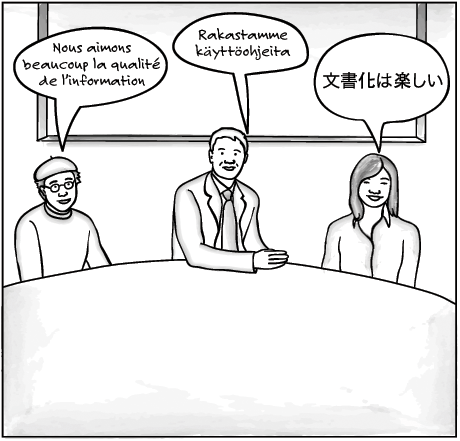Chapter 22. Managing Localization and Translation

Think like a wise man but communicate in the language of the people. | ||
| --William Butler Yeats | ||
Information-development projects increasingly deliver content in multiple languages and content designed to serve the needs of customers in many different international environments. Both localization of content, which means preparing it for use in different national or cultural environments, and translation, which means preparing content in the local languages of the customers, play increasingly significant roles in information development. The term localization is often used to include translation, but it may be simpler for you to consider the two activities separately.
Localization often refers to the process of converting a software product, especially its user interface, into a version appropriate in another country. The process involves more than translation of the words. It requires keyboards, menu selections, and myriad other issues to be taken into account. In your information, localization may include adding different government regulatory text required by different countries. It may include changing measurements from the English standard used in the United States to the metric standard used in most of the rest of the world. Other changes may be required to ensure that your content is acceptable elsewhere. In one project, I had to ...
Get Information Development: Managing Your Documentation Projects, Portfolio, and People now with the O’Reilly learning platform.
O’Reilly members experience books, live events, courses curated by job role, and more from O’Reilly and nearly 200 top publishers.

